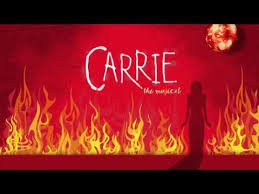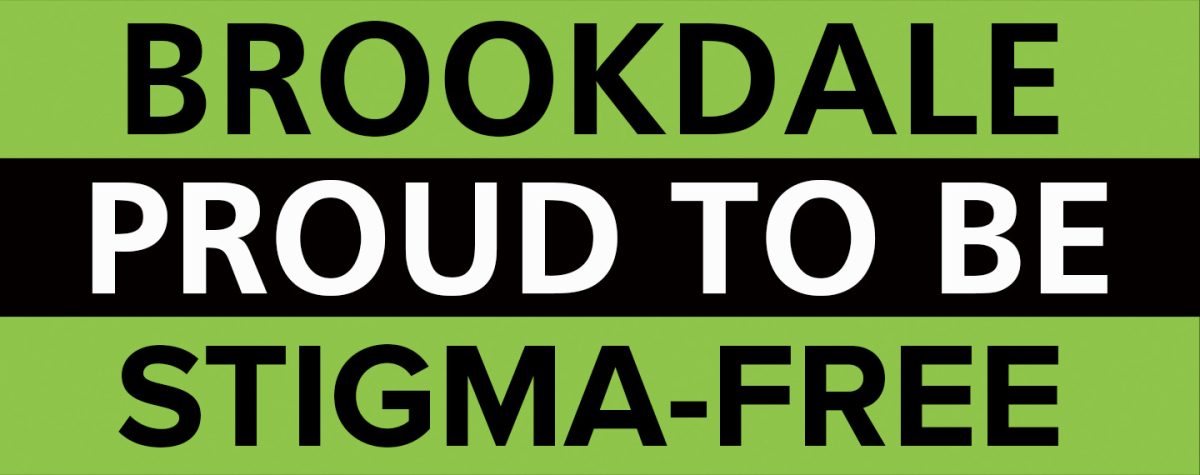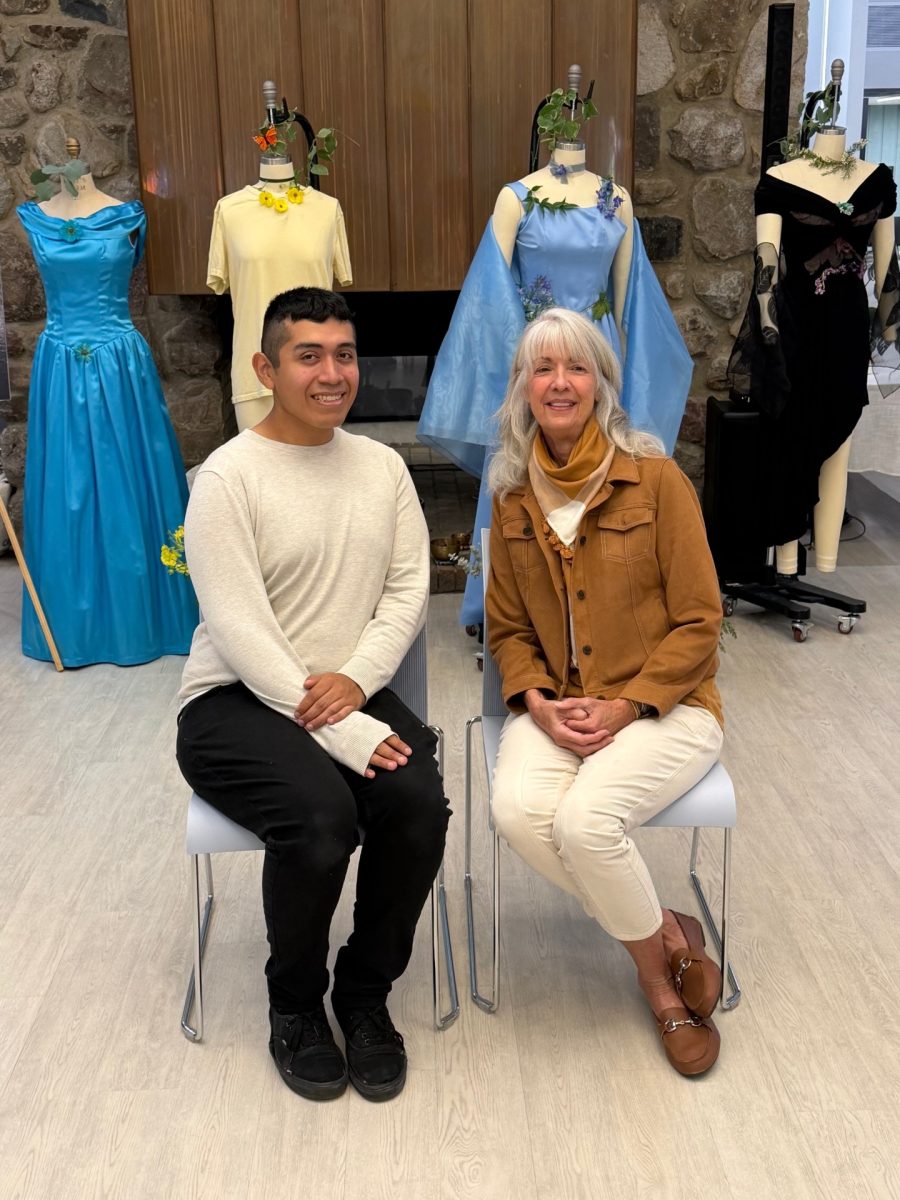‘Carrie: The Musical,’ My Favorite Monstrosity

December 7, 2020
By Drew Eldridge
There is one show in each musical theater lover’s heart that has permanent residence there. It has become a part of you and will never leave. You have memorized the script, each intricate harmony, and every piece of choreography.
It’s more than a “favorite” musical. It’s a deep love for an art form that knows no bounds. “Carrie: The Musical” has completely taken over my heart. I pray it never leaves. There’s just one slight issue… Carrie has been deemed the “biggest flop in Broadway history.”
I’d imagine at this point you have many questions, and I promise to get to them. However, to understand my deep attachment for this musical, you need to know its origins.
Carrie, much like her namesake, has been through hell and back. The musical has been viciously ripped apart by critics, was involved in a near decapitation, and has resulted in over $8 million in financial loss.
Carrie has been killed and revived more times than Frankenstein’s monster. It began in 1981 when Lawrence D. Cohen (original script writer of Carrie 1976) and Micheal Gore (Composer of hit musical, Fame) saw a production of Lulu at the Metropolitan Opera House.
After the opera, Gore and Cohen saw similar themes between Carrie and Lulu, and the pair began speculating what Carrie, the musical, would look like. Gore then called his career collaborator Dean Pitchford (writer of hit musical, Fame.) Pitchford loved the idea and joined the creative team, which began writing within the month.
In 1984, the trio performed a draft of act one in a workshop. Critics enjoyed it, and multiple high stakes investors showed interest. However, after a year, investors withdrew. It was not until 1988 that eccentric commercial producer Friedrich Kurz was contacted by Pitchford, Gore, and Cohen. The trio offered him a look at the musical’s current material, a few designed set pieces, and orchestrations. Kurz loved the idea, contacted the RSC (Royal Shakespeare Company) and pitched Carrie to the RSC as a “commercial venture akin to Les Miserables.”
The RSC agreed to stage and produce the show, thus beginning Carrie’s downfall. Because of the RSC’s investment, the creative time became stifled with requests. Terry Hands, the RSC’s “most prominent director,” immediately “coerced” the creative team into directing the project. This would prove to be the WORST decision in theatrical history. You may ask yourself, “what damage could one man do?” When Hands began to stage the project, he consulted with the creative team on the overall tone of the show, to which the team replied “The tone is akin to Grease” (referring to the hit musical.)
Hands then brought sketch designs and edits revolving around “Greece” as in “Grecian Tragedy,” including teenagers wearing togas in a sparkling white gymnasium. The creative team was too embarrassed to correct him. The show then launched at the RSC.
The immediate reaction from audiences was pure shock. No one expected “Carrie” to look or sound like this. The musical had cut ties with the familiarity of its source material. Instead, it became an odd spectacle that theatergoers flocked to see. Ticket sales were quite good because of this. The RSC began advertising the show as a “show-stopping HIT!” The show had a one month run in Stratford Upon-Avon (home to the RSC) and even American critics began buzzing with an odd excitement at the idea of the show transferring to Broadway.
Fortunately, critics were amazed at the performances of the lead performers. 17-year-old Linzi Hateley was chosen to play Carrie, and she was undoubtedly the right fit. Audiences and critics praised Hateley for some soaring high notes, and an amazing acting performance. Considering this was Hateleys first time on a professional stage, directors and producers all took note of this breakout star’s talent.
Hately brings the character of Carrie to life unlike any who have played the role before or after her. Her vocal technique also remains unmatched. Hateley was truly one of the last great performers to touch the role of Carrie, and I imagine that will remain so for quite some time.
Barbara Cook who played Margaret White gave an… interesting performance. Cook is a theatrical legend known for her high soaring soprano and her Tony-winning performance of “Marion” in The Music Man. Unlike ANY of the roles she had played in the past, this role required more than Cook was able to offer. Her soprano feels too melodic and elegant against the character’s nature, especially in intense scenes where Cook abuses Hateley on stage. The contrast of “melodic operatic tone” and “violent abusive mother” is too prevalent to provide a good performance.
Cook was unhappy with the project the moment she was casted. In leaked rehearsal tapes, Cook is heard cursing, complaining, even just refusing to sing at times. I imagine her frustration came to a head (pun intended,) when a set piece almost decapitated her on the show’s opening night in Stratford. This set decapitation is but a rumor and has been disputed by the show’s creators. However, given Carrie’s history, one could easily believe a mistake of that caliber is possible. Cook left the show as plans for a Broadway transfer were made.
Enter Betty Buckley. Buckley had become a sensation ever since her Tony- award-winning performance in Andrew Lloyd Webber’s Cats. She had also turned heads during her Broadway debut in 1776. Buckley was known for her stellar belt and control over the stage. She was a prime candidate for Margaret White and accepted the role immediately.
As the show began Broadway rehearsals, things seemed primed for success. The show was advertised everywhere. Newspapers, television, playbills, all with the byline: “There’s never been a musical like her!” As ticket sales opened, previews were soon sold out. Critics and Broadway fanatics alike knew this was a “once in a lifetime” show to see. The creative team was buzzing with the promise of a hit musical.
The show’s previews opened April 28 and sold out its first five opening previews. The Virginia Theatre had been completely transformed for the show. The inside of the theatre was painted completely black. The theatre now looked like a cave, with a stage fit only for vampires. If this was not enough stark contrast, the stage scenery was BRIGHT WHITE for the show’s first three numbers. Audiences were being blinded by an unnecessary and frivolous paint job.
Then at the musical’s first preview: the musical received its first death threat. In any theatrical performer’s heart, there is one noise that can bone chill them to near death within seconds. Laughter. I assume you (reader) are confused. Why laughter? Aren’t boos the worst reaction performers can receive? To you, the reader, I only applaud. You have never bore witness to a dramatic show receiving laughter. Not laughter born out of comedic performance, but laughter born out of UNINTENTIONAL comedic performance. Audiences being moved to the point of cackling, out of a director’s fatal direction, grotesque costumes or an actor’s terrible choices. In the case of Carrie, it was all of the above.
As the curtain opened on April 28, the overture of the show played to an unsuspecting audience. The audience clapped for the pit’s performance, then were smacked in the face by screaming. About twenty girls were now on stage in togas screaming. The girls, along with superstar Darlene Love (playing gym teacher, Ms.Gardener) were performing “IN” the show’s opening number. The girls are in Ms.Gardener’s gym class, and are going through a real rigorous dance workout while they sing about their insecurities, problems at school and general miserableness.
The audience didn’t even have time to close their agape mouths. The girls were spinning, kicking, twirling, even creating a giant human pyramid. Audiences literally stared as the number ended, with the girls in a human pyramid. Carrie then knocks the girls down attempting to join the pyramid. They (in slow motion) fall to the stage floor. The girls then get up, shout insults at Carrie that all rhyme. “What a mess!” “How she dressed” “Pain in the ass!” “Late for class” while they move to the second number.
This number was the nail in the coffin for the already fearful audiences. The girls were now stripping down to nude and entering a “shower.” A pane of glass that had “steam” and some water trickling down the side. The audience now all telepathically agreed on one thing: this was a hot mess. The girls then begin singing “Dream On” in which they sing about boy problems, date rape, and drinking.
The platform then levitates them off the ground, and the audience loses it. They could not have any respect for this show. Levitating nude teenage girls? Carrie (within its first two numbers) had established it was not the Carrie you know and love. It was Bye Bye Birdie meets Grease on steroids. You could not fear it, and you most certainly would not take it seriously.
The girls then end their number with a shriek from Carrie herself. They discover Carrie is having her period and begin to tease her mercilessly. The girls chant “Plug it Up!” and “Carrie’s got the curse!” while Carrie herself cries downstage. The audience was also in tears, though of a kind that came from laughing until your face begins to swell.
Ms.Gardener eventually comes in, reprimands the girls, and Carrie is told to “go home,” all of which is true to the movie. It took us two terrible songs for an audience to be familiar with one of the most famous horror stories of all time. Then, as if someone had flipped a switch, Linzi Hateley (Carrie) begins to sing her first solo ballad “Carrie.” The audience stops laughing, and for the first time, begin to see a speck of a respectable show.
Hateley is belting and riffing, doing her best to save a sinking ship. Her ballad ends with a large triumphant belt and poetic lyrics. “I am the sound of distant thunder, the color of flame. I am Carrie, I am a song of endless wonder that no one will claim! But someday, someone will know my name.”
The audience cheers as if they had all just been told they won the lottery. People are standing up, clapping, even throwing in a few whistles. It is reported that Hateley got a minute standing ovation from the audience each time she finished her ballad. After enduring the beginning of the show, I can believe an audience was moved by her performance.
Then, as if she heard the audience’s prayers, Buckley appears. The audience claps before she even speaks. Buckley then gives a heartbreaking and earnest rendition of “Open Your Heart,” in which Margaret White prays for her soul to be taken to salvation. The orchestration and score sound straight out of a Baptist church Sunday service. Buckley is selling every inch of her character, and the audience is clinging to every move she makes.
Hateley joins Buckley onstage as they sing the last chorus of the song together, begging for forgiveness for their sinful ways.
The song ends, and Carrie explains to her mother that something terrible happened to her at school. Margaret avoids her daughter with cold and curt answers. For the first time within the musical there is believable, personable dialogue, and it’s working. The tension created by Buckley and Hateley is palpable. With Hatley’s line “I started to bleed…” a church bell is heard, and a French horn begins playing a low note. Thus beginning the thrilling “Eve Was Weak” in which Margaret convinces and abuses her daughter through religious rhetoric.
Buckley is untouchable within the song. She is pulling Hateley by the hair across the stage, stopping to pray, yelling religious babble. Hateley is in tears, pleading for her mother to show mercy. It is pure magic, and the audience finally gets to see Carrie: The Musical. Hateley is forcefully shoved into a trap door by Buckley.
Buckley finishes the number with an enormous belt, begging God to “purify” her daughter. I have never heard such cheers. In every recording of the show, the audience is beyond clapping and cheering, they are elated. They know they have just witnessed a supreme performance given by two amazing actresses. For a minute, the audience forgets what they have previously seen. They believe good things are to come. That number was incredible—the chemistry between the actresses indescribable.
They are then treated to “Don’t Waste the Moon,” in which the show’s ensemble bump, grind, and thrust to synth and 80’s pop. The premise of the song being sexually frustrated teenagers at a drive-in movie. Yes, the creative team chose to follow the heavy heartbreaking physical abuse song with sex-crazed teenagers in latex bodysuits.
Thus, is the pattern of Carrie: The Musical. The rest of the musical follows the same sequence: a terrible off-tone song, followed by an incredible ballad or duet by Hateley or Buckley, followed by another terrible song. The creative team created a musical with such a tonal dissonance problem, critics described the show as “Two different shows mashed into one musical.”
Carrie’s creative team had managed to create a modern-day musical Frankenstein. Its shape is promising, but the material and bones are monstrous. The problems not only lie within its rampant tonal dissonance, but everything about the show. The score, costumes, set, script, nothing is working as it should.
However, the show has immaculate moments. Each song delivered by Margaret or Carrie is theatrical gold. Within these songs, there is a different score from the rest of the musical’s synth extravaganza. Instead there is a rock-opera stylistic score mixed with proper lyrics. Each song between Margaret or Carrie delves the audience deeper into their own perspective worlds, showing us a deeply traumatized pair of women, both scared by the world they live in and offering us a glimpse of what the musical could and should be.
As for the rest of the songs, they are replicas of each other. All odd, synth electronic music paired with erotic lyrics and terrible choreography. Yet within this storm there exists a respite in the form of Margaret and Carrie. I pray to the theatrical gods that perhaps someone gets their hands on Carrie: The Musical and does a complete overhaul of the entire libretto. There is gold to be found if you’re willing to dig through the rest of the trash.


























